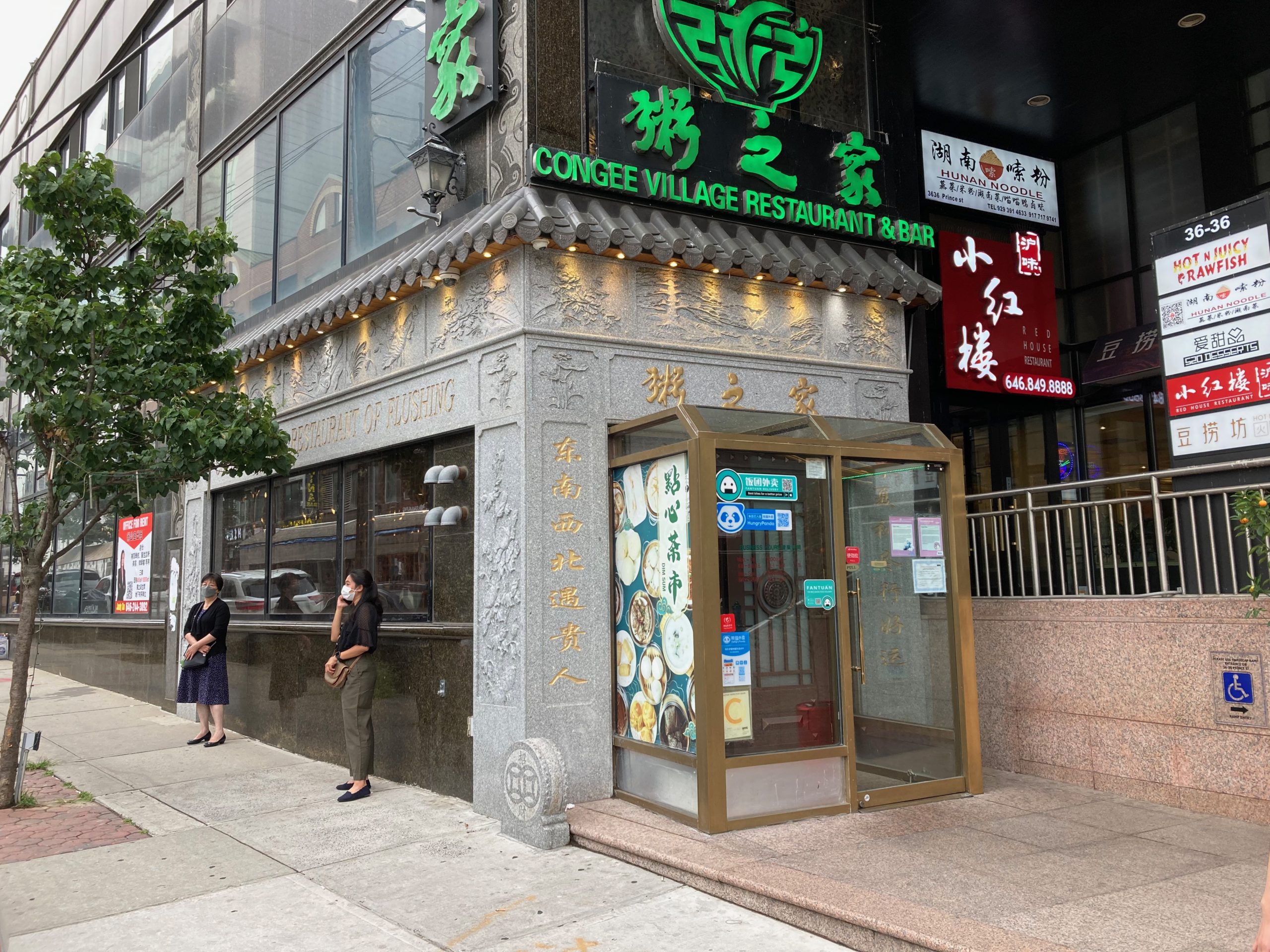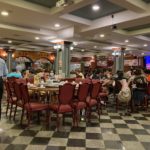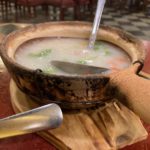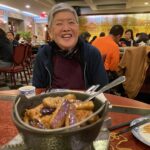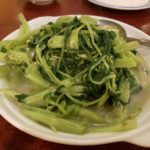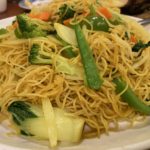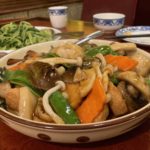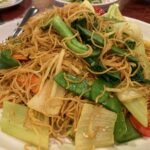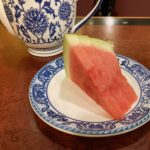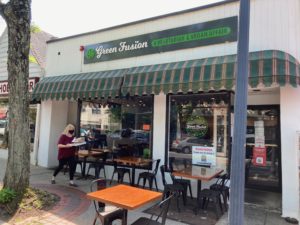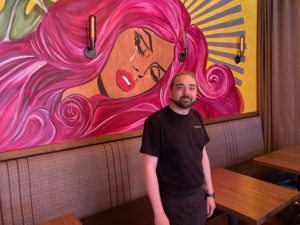A few years ago, I heard Dr. Pam Popper say that birthday parties are a good time for cake, and Christmas morning is a good time for cookies, but that people end up in her office when they “treat” themselves to such delicacies multiple times a day. I love plant-based Asian food, and I have kind of adopted Dr. Popper’s philosophy with regards to Asian cuisine with added oils. Why? Most Asian restaurants don’t cook without oils, and very few use healthier oils. I have inquired quite a few times and in every instance, it was a GMO (non-organic) corn or vegetable oil that was being used by the restaurant (I suspect it is true with all restaurants, unless they specify otherwise). As a result, I usually order something steamed, and then ask if the cooks can be creative with the seasonings and spices. It almost always works out well, and it does allow for those rare moments of “treating” myself to a dish with minimal added oil (once you remove added oils from your diet, the idea of re-introducing them is kind of gross).
Congee Village Restaurant & Bar in Flushing, Queens is an often crowded eatery that has quite a few terrific vegan options. The good news is that they have an entire page on their menu that is dedicated to vegetable dishes! The bad news is that they also have 8 pages comprised of, you guessed it, meat and seafood dishes. Uggh. Despite a C rating from the city of New York (which translates to 28 or more sanitary violations, or an inability to play politics), Congee Village Restaurant always appears to be clean, and we have yet to walk away disappointed (fresh food, and friendly service are key). In fact, on most days, you can find the waitresses snapping and cleaning giant piles of green leafy vegetables on a corner table in the dining room, which somehow always makes me feel good. 🙂
One of the coolest parts of eating at Congee Village is the complimentary tea, and desserts (watermelon slices anyone?). During our last visit we started with the Healthy Vegetarian Porridge (Congee). If you are unfamiliar, Congee is a porridge made from white rice that settles the stomach and can be made with ginger, scallions, peppers, garlic, and all types of veggies (and unfortunately meat too). It is a tasty and popular breakfast dish in China, and the plain version can be especially appealing if someone is feeling poorly. We then ordered the sauteed water spinach with garlic which is always lovely, and the vegan Singapore Style Mei Fun with minimal oil (a friend of mine, who clearly had never been to Ireland, once proclaimed that there was no such thing as bad pizza, which is kind of how I feel about vegan Singapore Style Mei Fun). We also ordered the fried bean curd with mushrooms and mixed veggies, which was especially enjoyable, due in large part to its variety of succulent mushrooms (dried mushrooms are a staple in Asian cooking, and are not only packed with flavor, but are super nutritious as well…who knew?). As usual, all of the dishes were excellent, and we really enjoyed our meal.
The bottom line on the vegan options at Congee Village Restaurant & Bar in Flushing, Queens (they also have a sister restaurant in NYC’s Chinatown)? A thumbs up, of course! 🙂
**Notes:
– As far as I know, China still doesn’t allow the planting of genetically engineered (GE) corn or soybeans, which is great news if you enjoy their tofu and fried bean curd products like I do, and you want to lessen your risk of developing a chronic illness, while also protecting the biodiversity of Earth’s soil. Unfortunately, US Chinese restaurants, and most US restaurants in general, appear to still be using the more harmful American made GE (or GMO) cooking oils because they are cheaper, and easier to obtain (the prices are also artificially suppressed by US subsidies). Gotta love capitalism!
– According to the Center for Food Safety, “Currently, up to 92% of U.S. corn is genetically engineered (GE), as are 94% of soybeans and 94% of cotton (cottonseed oil is often used in food products). It has been estimated that upwards of 75% of processed foods on supermarket shelves – from soda to soup, crackers to condiments – contain genetically engineered ingredients…A number of studies over the past decade have revealed that genetically engineered foods can pose serious risks to farmers, human health, domesticated animals, wildlife and the environment. Despite these long-term and wide-ranging risks, Congress has yet to pass a single law intended to manage them responsibly. The haphazard and negligent agency regulation of biotechnology has been a disaster for consumers and the environment. Unsuspecting consumers by the tens of millions are purchasing and consuming unlabeled GE foods, despite a finding by the U.S. Food & Drug Administration scientists that these foods could pose serious risks.”
– Dr. Pam Popper on the best foods to have as staples in your diet: “Whole grains, legumes, and starchy vegetables. More broadly, I tell people to make the staples of their diet the four food groups, which are whole grains, legumes, fruits, and vegetables. We have our own little pyramid that we use here at The Wellness Forum. Beans, rice, corn, and potatoes are at the bottom of the pyramid. Then steamed and raw vegetables and big salads come next, with fruits after that. Whole grains, or premade whole grain foods like cereals and breads, are all right to eat. Everything else is either optional or a condiment. As for high-fat plant foods—nuts, seeds, avocados, olives—use them occasionally or when they’re part of a recipe, but don’t overdo it; these foods are calorie-dense and full of fat. No oils, get rid of the dairy, and then, very importantly, you need to differentiate between food and a treat.”
Sources:
Click here for the Congee Village Restaurant & Bar website.
Click here to learn more about the risks of Genetically Engineered foods from the Center for Food Safety.
Click here to learn more from EWG about GE foods, and glyphosate, an herbicide/biocide used in many GE (GMO) crops.
Click here to learn more from Dr. Pam Popper.
Click here to learn more about the health benefits of mushrooms.
Click here for more information on how NYC restaurants are graded for sanitary violations (warning: NY state websites rarely work properly).

